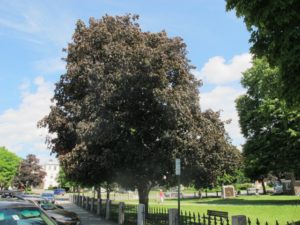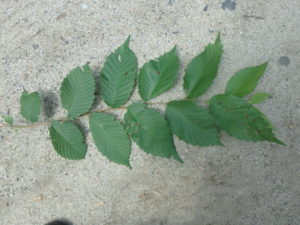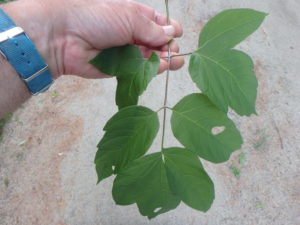Three Trees You May Have, But Probably Shouldn’t
Tree-huggers to the contrary, not all trees are good. Yes, they all take carbon dioxide out of the atmosphere, reducing global warming. Yes, they provide shade, keeping us cooler during hot stretches in summer. Most trees are great.
But some are invasive, crowding out others and sucking up water and nutrients other plants need to survive. Some have no chance to live to maturity because of pests or disease – so you eventually have to have them removed. Others are weak-wooded and attract insect pests that plague us. Let’s look at three culprits.
A maroon-colored variety of Norway maple (Acer platanoides) known as ‘Crimson King’ was introduced from Belgium in 1948, largely to replace the elms that were dying from Dutch elm disease. It will grow in sun or shade, wet or dry in almost any kind of soil. It is big, fast-growing tree that can grow 2 feet per year. Sounds good.
Here’s the problem: Norway maples produce large numbers of seedlings and can out-compete our native maples and most other trees. They have wide-ranging and aggressive root systems that can suck the water and nutrients out of the soil far beyond their canopy. And they can shade out native species with their broad-reaching branches and large leaves.
Crimson King is a hybrid, and the numerous seedlings it produces are mostly green-leaved – which means that most gardeners just assume that the maple seedlings they see in their woods are native maples, even if there is a Crimson King on the property, or at a neighbor’s house. In general, Norway maple leaves are broader and larger than those of sugar maples.
There is a simple way to test a maple to see if it is a Norway: snap off a leaf and look at the base of the petiole (leaf stem). If it oozes white sap, it’s a Norway maple.
For most of the 20th century the American elm was the most prominent street tree in the United States. It was tall, tough and stately. But Dutch elm disease, which ironically is not from Holland but Asia, was first identified here in 1921. By the end of the century most elms were dead, infected or dying.
Elms continue to pop up everywhere. Learn to identify their toothed leaves with prominent ribs, and their rough bark. You may as well pull them out or cut them down when they are small. They will not survive, succumbing at the age of 25 or 30 years – big enough that only the most intrepid of chainsaw-wielding gardeners will want to remove them. It’s “Call the tree guy!” for most elm removals.
There are hybrid elms and “resistant” elms that are said to survive despite the prevalence of the disease. I have seen some, and interviewed a home owner who had one – for a while. My thought? The replacements are not nearly so stately as the originals, and not worth the investment.
Boxelder (Acer negundo) is another “No!” on my list of trees. It is weak-wooded, meaning that branches break easily in storms. It produces hundreds of seedlings each year, and they pop up everywhere.
It is in the maple family, but the leaves don’t look much like the common maples we know. The leaves are composed of 3 to 9 leaflets, mostly commonly long and light green. My favorite tree expert, Michael Dirr, writes it may “appear as an unkempt shrub, a gaunt tree, or a biological fright.” I agree. But he notes that it will grow in places where nothing else wants to grow.
The worst part of having boxelders is the Eastern Boxelder Bug (Boisea trivittata), which are attracted by boxelders. These half-inch long bugs are dark brown to black with red or orange decorations. The nymphs are all red.
In some places thousands of these pests climb all over the outside of houses, even crawling inside to spend the winter. They can emit a nasty odor if provoked, and may leave stains and smells behind. Birds leave them alone, given their nasty smells. They mainly subsist on seeds of boxelder, maple and ash, but suck juices out of the leaves, most notably maples. They don’t seem to take enough to damage the plants. The nymphs are currently all over many kinds of plant leaves, and seem to be feeding on them.
I’ve read on-line that making a solution of 1 to 2 tablespoons of dish soap in a quart spray bottle will make an effective boxelder bug killer. I’ve never had the problem, so haven’t tried it.
So how can one get rid of these less desirable trees? Learn to recognize them and uproot them when they are small. I have elm suckers that have been coming up from a stump of a tree I cut down more than 10 years ago. I need to keep it from producing green leaves as they are the source of energy that feeds the roots and starts new shoots. But it’s never at the top of the list of things to do in the garden … so the weed tree wins!
Read Henry’s blog at https://dailyuv.com/





